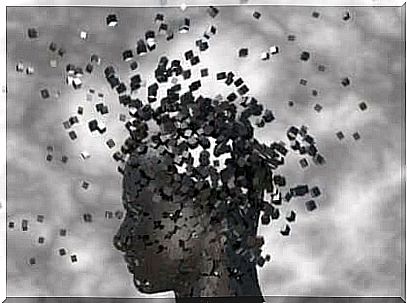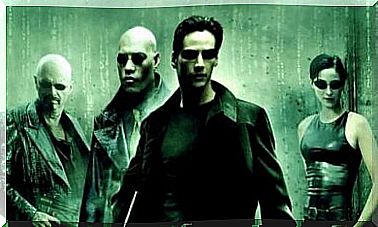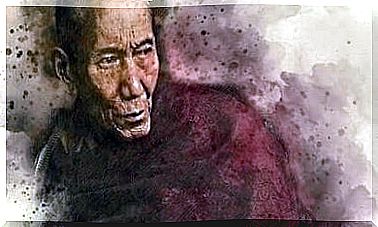Jacques Lacan And The Structure Of The Unconscious

Jacques Lacan was a staunch defender of Freudian structuralism. Throughout his career, he focused on the development of the theory around the unconscious. Read on and learn more!
Jacques Marie Emile Lacan was an important figure in the Parisian intellectual community for much of the 20th century. His name is often related to psychoanalysis.
He wrote and taught about the importance of Freud’s discovery of the unconscious. He explored the concept from the context of the theory and practice of analysis, in and of itself, to its connection to a wide range of disciplines.
For those interested in the philosophical dimensions of Freudian thought, Lacan’s work is invaluable. In the last century, Lacan’s ideas became the center of various, psychoanalytic discussions in philosophical circles.

The early years of Jacques Lacan
Jacques Lacan was born on April 13, 1901. He was the first son of a wealthy and bourgeois family. His parents, Alfred Lacan and Emilie Baudry, belonged to an entirely Catholic family.
In 1908, Lacan was enrolled at the prestigious Stanislas College, a Marista school that served Parisian bourgeoisie. There, he received a solid elementary and middle school education, with a strong religious and traditional focus. He finished school in 1919 and began to develop his own philosophical beliefs.
Lacan’s professional companies
Although Lacan’s first publications came out in the late 1920s, his editorial activity did not really take hold until the next decade. The 1930s saw the first Lacanian milestones.
- In 1032, Lacan published his medical dissertation in psychiatry, entitled ” On Paranoic Psychosis as it Relates to the Personality “.
- He became an important figure in the artistic community through his collaborations with surrealists and dadaists.
- Lacan gave his first presentation of the now famous theory of the “mirror stage” at the International Psychoanalytic Federation (IPA) in Marienbad in 1936.
- In 1938, one of Lacan’s essays, entitled ” Family Complexes in the Formation of the Individual “, was published in the French encyclopedia.
The 1930s were crucial years for Lacan’s development. His youth was marked by a clash of interests and influences, related to psychoanalysis, psychiatry, philosophy, art and literature, among other things.
This period also marked the beginning of a strong, interdisciplinary element in Lacan’s work. He not only studied Freudian analysis, but also studied Hegelian dialectics and Kojevian pedagogy. Lacan made his own contributions to these three perspectives. He added the different experiences of “insanity” from several perspectives.
The post-war period
The 1940s were crucial to Lacan’s journey. During this decade, he became a great analytical thinker. During this period, he produced many written materials, including seven annual seminars and many of his most well-known essays.
After the war, Lacan learned about Ferdinand de Saussure’s structuralism and its followers, such as Claude Levi-Strauss and Roman Jakobson.
Scientists agree that Levi-Strauss’ book, The Structural Elements of Parentage, helped start the structuralist movement in France. This movement flowed during the 1950s and 60s, and it challenged the theoretical sovereignty of existentialism.
This change in French social theory led to a fundamental reorientation in Lacan’s worldview. Despite changing his focus, however, Lacan remained faithful to Freudian, structuralist psychoanalysis.
Lacan portrayed himself as the sole defender of Orthodox Freudianism. He firmly believed that it was crucial to find the meaning of language for analysis, in order to get Freud’s revolutionary focus on psychic subjectivity.
Lacan brushed off all these ideas and established “Lacanism” in his comprehensive manifesto entitled: ” The Function and Field of Speech and Language in Psychoanalysis “.
Death and inheritance
In 1980, near the end of his life, Lacan decided it was appropriate to close his school, Ecole Freudienne. It was a controversial decision that led to internal conflicts among his followers.
However, Lacan did not really have the opportunity to participate in these discussions when he died in 1981. His son-in-law and publisher of Le Seminiaire, Jacques-Alain Miller, reopened the school.
The theory of the three registers forms the framework for various concepts during Lacan’s intellectual life path. The three registers correspond to the imaginary, the symbolic and the real.
However, these concepts were not static during his lifetime. The characterization of each register and the relationship between them underwent many revisions and changes over the course of his long career.

Language and cultural codes according to Jacques Lacan
Jacques Lacan gave us the idea that “the unconscious is the discourse of the other”, understood by the fact that “the other” is all that is completely distant from and beyond the self. The second is the environment you are born into, the things you have to “transfer” to in order to survive and thrive.
In your life, you will gradually gain awareness and understanding of a number of signifiant. Significants are signs or codes that represent concepts and ideas.
These signifiants can only reach us from the external world. They must therefore have been part of the language or “discourse”, in Lacan’s terms, the “other”.
According to Lacan, you can only express the ideas and feelings you have through language. The only language you can use to express yourself is thus the language of the other.
Your unconscious generates emotions and constructs images based on the language of the other. Lacan therefore says that “the unconscious is the discourse of the” other “”.
In conclusion, Lacanian theories have had a significant impact on psychoanalytic practice. They have also made a more objective and open interpretation of the unconscious possible.









